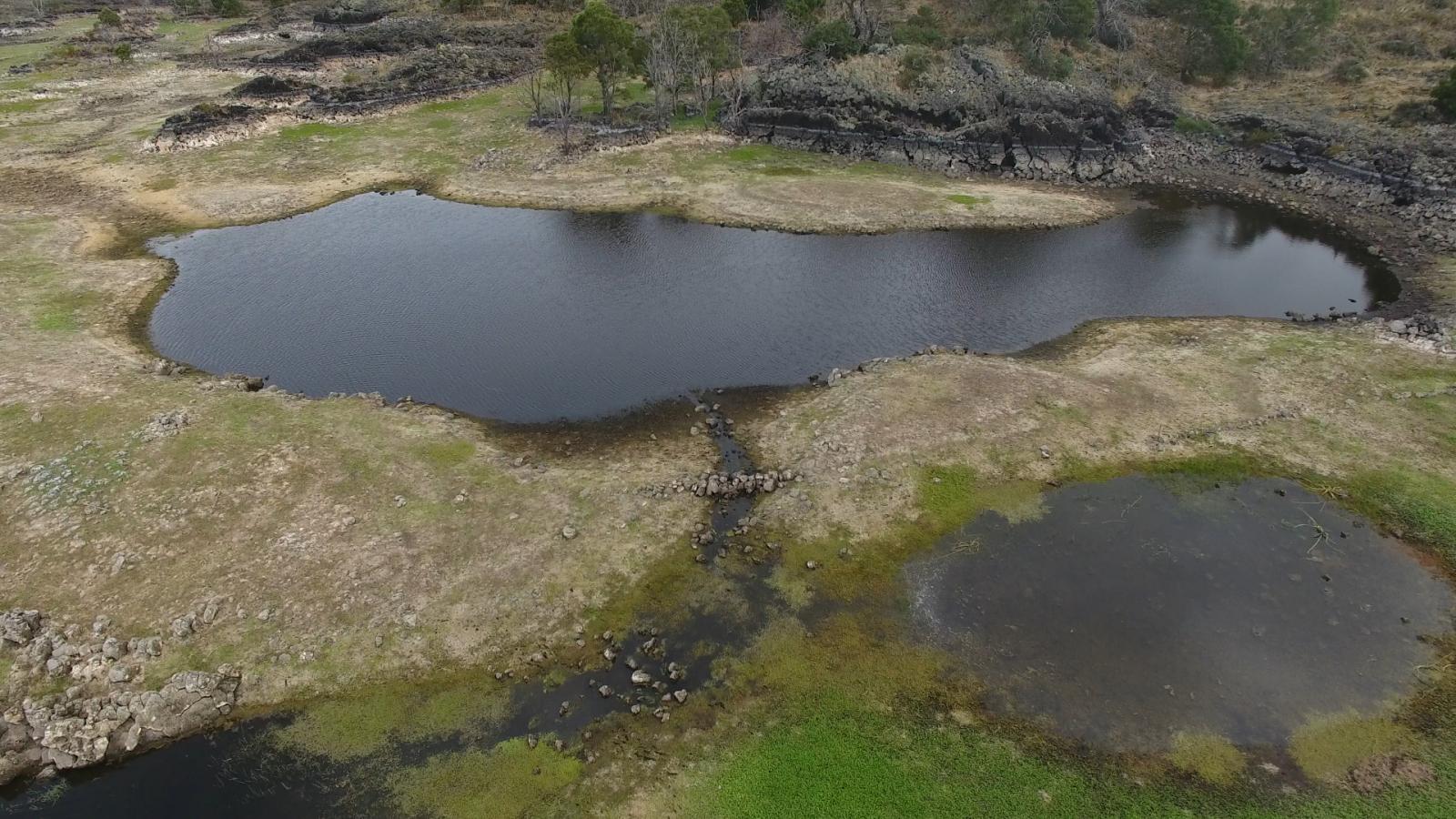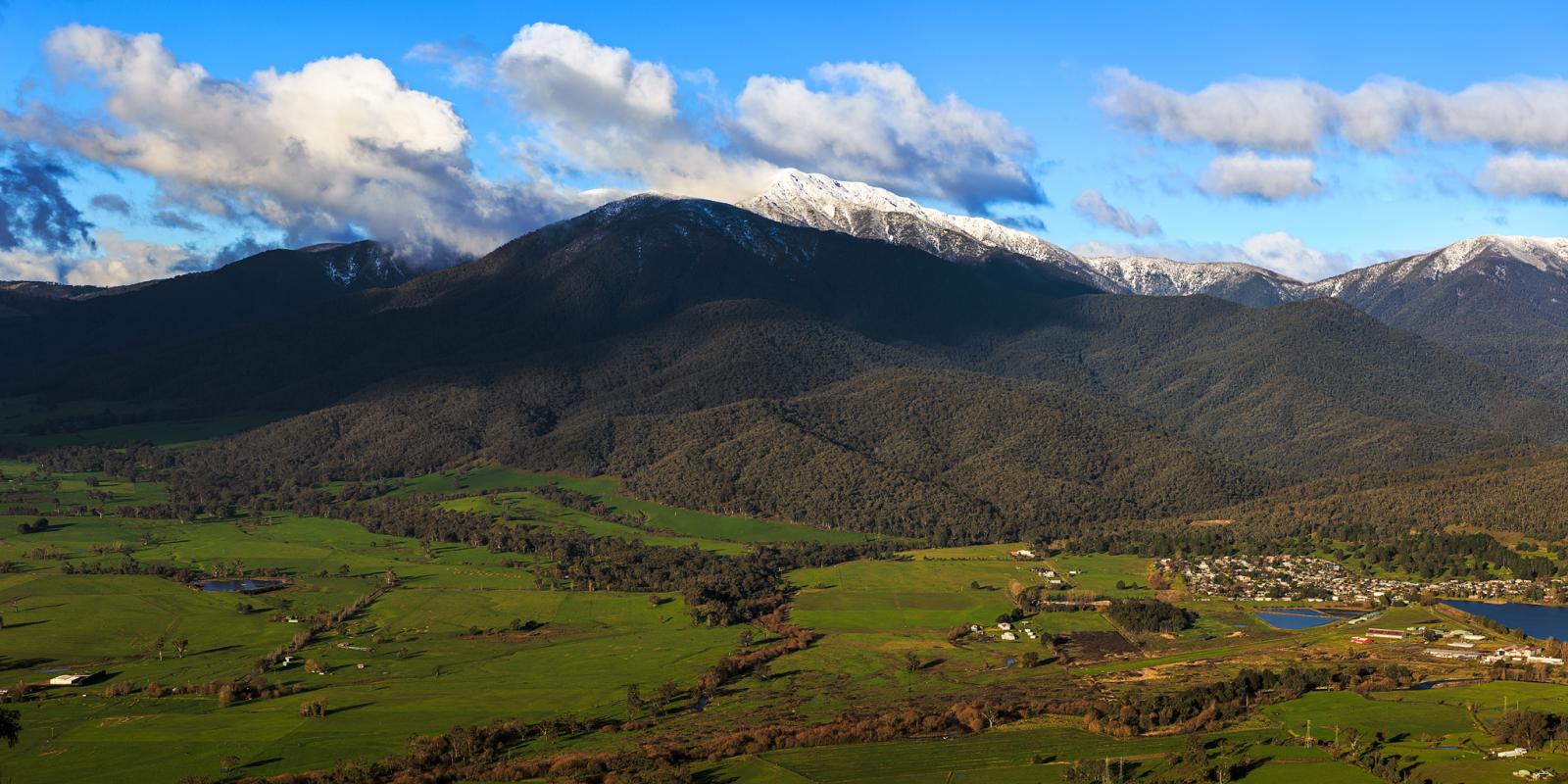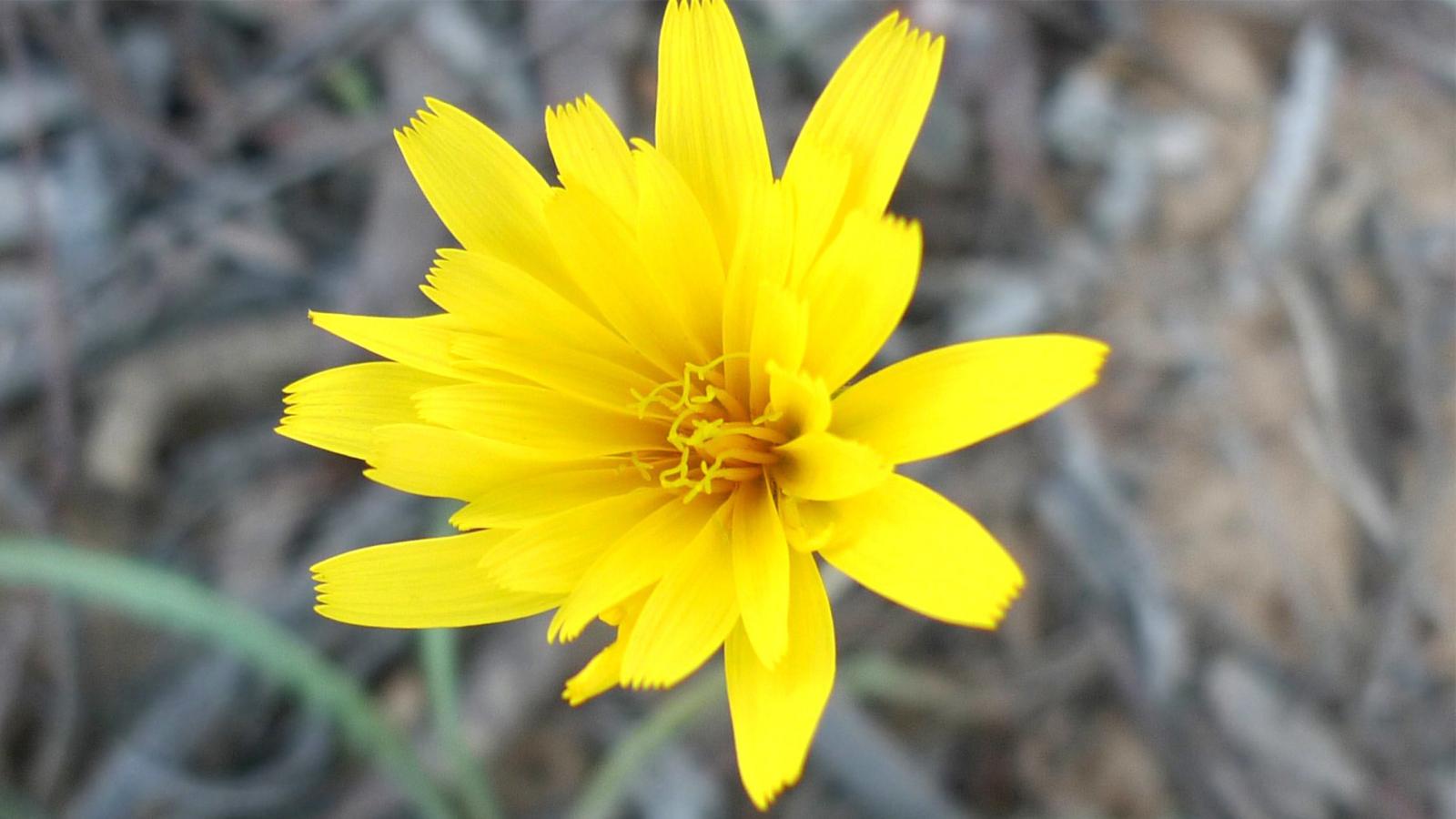Before colonisation, Aboriginal people were not simply hunters and gatherers as we are taught in school. We had a deep knowledge of the land and knew how to harvest our food sustainably.
We also had ways of manipulating the land to ensure we could get what was needed. We would build dams and wells, we planted and harvested seeds and to preserve the surplus we would store it in houses or sheds.
Fire was used in burning off practices to help nourish the land. When the fire would go through clearings, sweet and fresh grass would grow in its place this would lure animals in to the area making it easier to hunt.
Mob who lived along the coast or along rivers and streams would spear fish and rays in the shallow water or trap them in fishing nets that were woven with reeds or cane. Some of these traps would have a larger opening on one side to allow fish and other marine animals to swim in and a smaller opening on the opposite side so that babies could swim out and reach their full size.
We had canoes made out of trees that we would paddle into deeper waters to fish (a line made out of a plant based material and a hook that may have been made from stone or shell). For larger animals like turtles and dugong we would spear or harpoon them (a harpoon would be a rope attached to the end of a heavy spear). We also had sophisticated fish and eel traps, the most famous being the Budj Bim Eel Trap (which is now world heritage listed as of 2019).
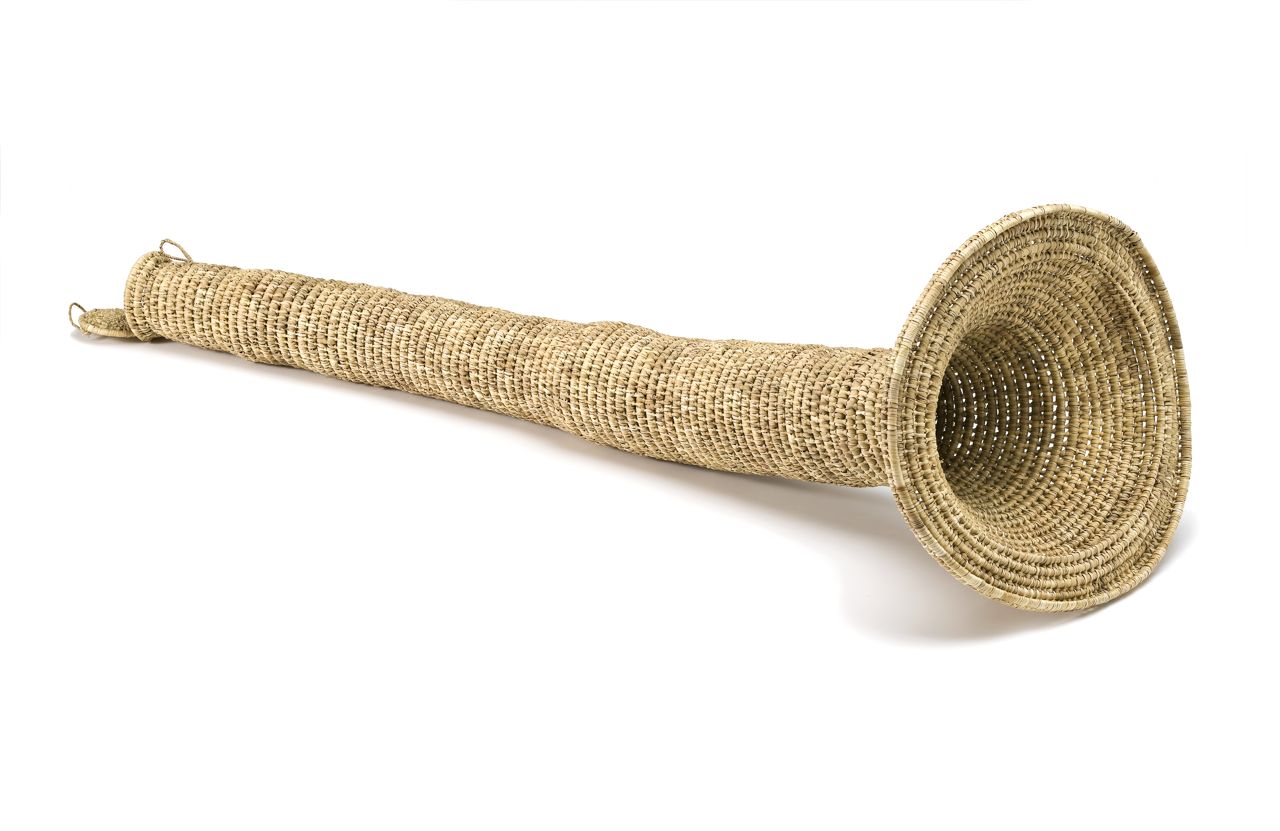
Eel trap. Image source: Victorian Collections - Meerreeng-an Here Is My Country
The traps are made up of a series of canals and graded ponds, water levels would be manipulated to encourage eels to swim into the trap. Baskets would be placed at the entrances to allow smaller/baby eels to escape. Eels could then easily be harvested.
The Gunditjmara people of South-Western Victoria built Budj Bim over generations to capture eels through a carefully laid system of weirs, channels and holding ponds.
Image Source: The Wire.
Farming and agriculture
It is often said that before colonisation Aboriginal people only ‘hunted and gathered’ our food. However, this is not the case as our ancestors had sophisticated farming and agricultural techniques as well. This included planting seeds to create vast farms filled with crops, caring for the soil, harvesting the crops and storing the produce.
In fact, Aboriginal people may be the world’s oldest bakers, as we baked bread made from the grains harvested from our farms. Aboriginal farming and agriculture suited the different climates and environment. Food we grew included yams and tubers (like potatoes), grains and grasses including types of rice, fruit and vegetables and much more. We also built dams, trenches and wells so we had sources of water for our crops.
Following colonisation, our farming practices were disrupted and many of our crops were destroyed by sheep and other introduced animals. However, many Mob are looking to revive Aboriginal farming practices as they are better for looking after the environment.
Food that was harvested was also preserved and stored so that our Communities could be fed and healthy all year round. There were many different ways Aboriginal people stored the grains, nuts, fruit and veggies, fish and meat we farmed, including in chambers made from clay and straw, storage units built from wood, in bags and in hollow trees. Having these storage techniques also meant we could feed hundreds of hungry mouths at ceremonies and gatherings.
Native Food
We recognised that the land had limited resources and so when we did farm, cultivate and collect food, we always made sure to only take what we needed and nothing more. We had sophisticated practices to allow the land to replenish itself of what we had taken.
The following is a list of some of common foods eaten before colonisation:
- Above-ground plant foods such as fruit (figs, lilly pillies, quandong, bush apples and plums), nuts (macadamia) and seeds of acacias and various grasses which we would ground between two stones to produce flour and make bread.
- Below-ground plant foods such as the roots of several of bush potatoes and yams and the bulbs of water lilies.
- Insects like the witchetty grub which are found amongst tree roots and beneath the bark, green ants, and some moths such as the Bogong Moth. We also consumed the by-products of insects such as honey (this was produced by honey ants and was found in the honey sack attached to the ant), lerp and other sugary substances deposited on gum leaves.
- Animals such as birds (emus, jabirus magpie geese, budgerigars), frogs, reptiles (lizards, snakes, tortoises, turtles, crocodiles) and land animals (kangaroos, wallabies, koalas, possums, etc.)
- Marine animals such as sharks, rays, dolphins, dugong, whales, turtles, fish and eels.
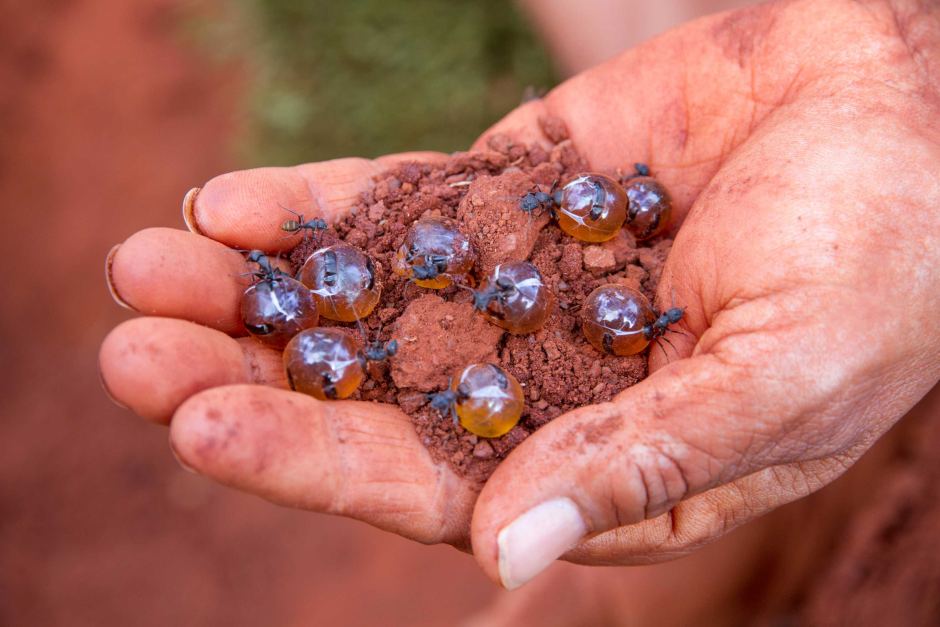
Honey Ants. Image Source: ABC News.
This is just a general list of bush tucker. It is important to make sure you know what type of plant or animal it is before you try to eat it as many native plants and animals are poisonous and venomous and can cause severe harm to you if ingested incorrectly.
The highest mountain in Victoria and part of the Great Dividing Range, neighbouring Aboriginal nations would come here to feast on the protein-rich Bogong Moth.
Image Source: Mount Bogong in Victoria. Taken from Tawonga Gap lookout.
Medicine
Many of the native plants found in this country can be used not only for eating but also as medicine. These plants include:
- Eucalyptus oil (Eucalyptus sp.) – Eucalyptus leaves can be infused for body pains and fevers and chills. Today the oil is used commercially in mouthwash, throat lozenges and cough suppressants.
- Desert mushrooms (Pycnoporus sp.) – Some Mobs would suck on the bright orange desert mushroom to cure a sore mouth or lips
- Emu bush (Eremophila sp.) – Concoctions of emu bush leaves were used by Mobs in the Northern Territory to wash sores and cuts. In the last decade, the leaves from the emu bush were found to have the same strength as some established antibiotics.
- Goat’s foot (Ipomoea pes-caprae) – Goat's foot plant was used for pain relief from sting ray and stone fish stings, mobs from northern Australia and parts of New South Wales, would crush and heat the leaves of then applied them directly to the skin.
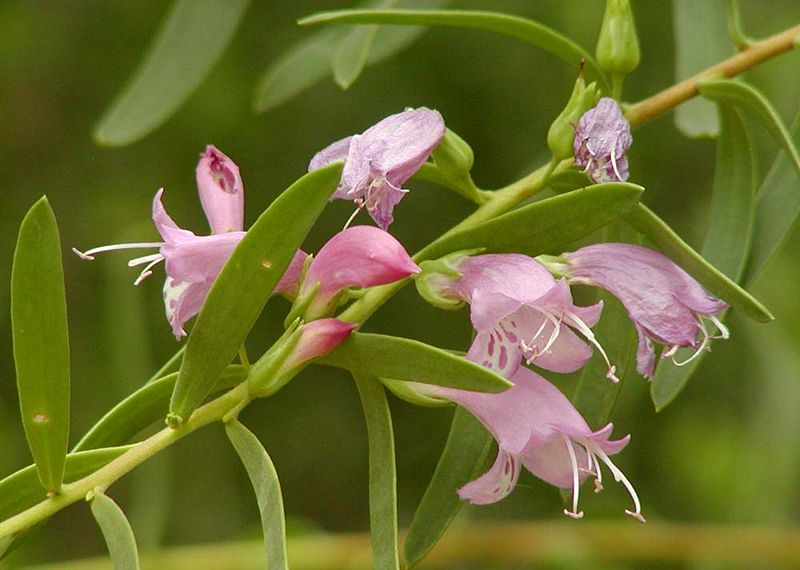
Emu Bush (Eremophila maculata flower).
This is just a small list of bush medicine and there are many other plants that have healing properties. It is important to make sure you know what a plant is before you try to use it for medicine as many native plants are poisonous and can cause more harm to you.
Uncle Bruce Pascoe and Auntie Fran Bodkin show us how traditional systems of ethno-science and permaculture are exportable, and can be used to create a more sustainable Australia.
Image Source: Timeout - The rise of bushfood
Recipes – modern take on traditional foods
- Lemon Myrtle Damper: Damper with a Twist!
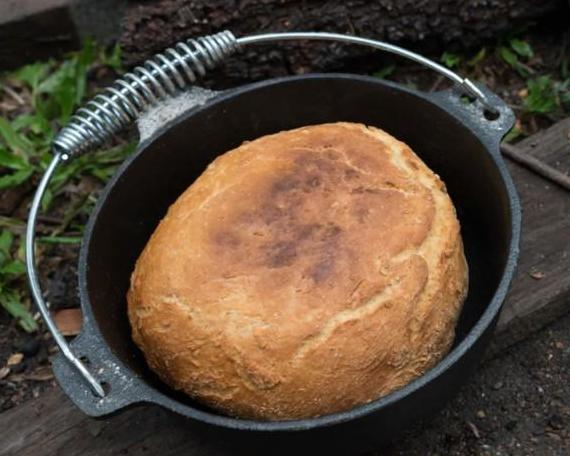
- Wattleseed and Saltbush Damper with Lilly Pilly Jam
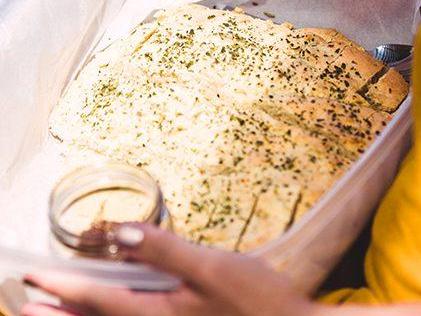
- Pineapple fritters with pepperberry sugar
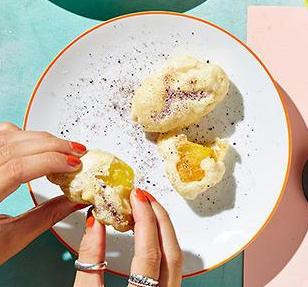
- Crispy-skinned butterfish with quandong jam
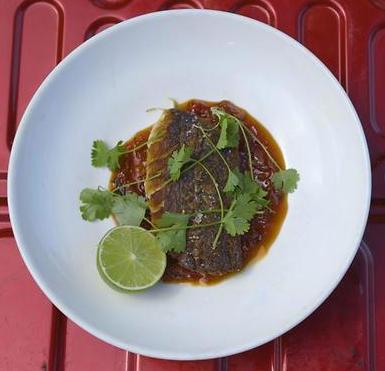
- Saltbush and mountain pepper squid
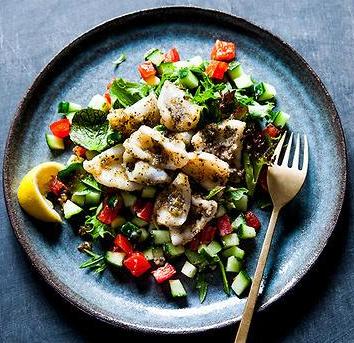
- Flavours Of The Coast: Koorie Cookbook (scroll to the bottom of this page to download)
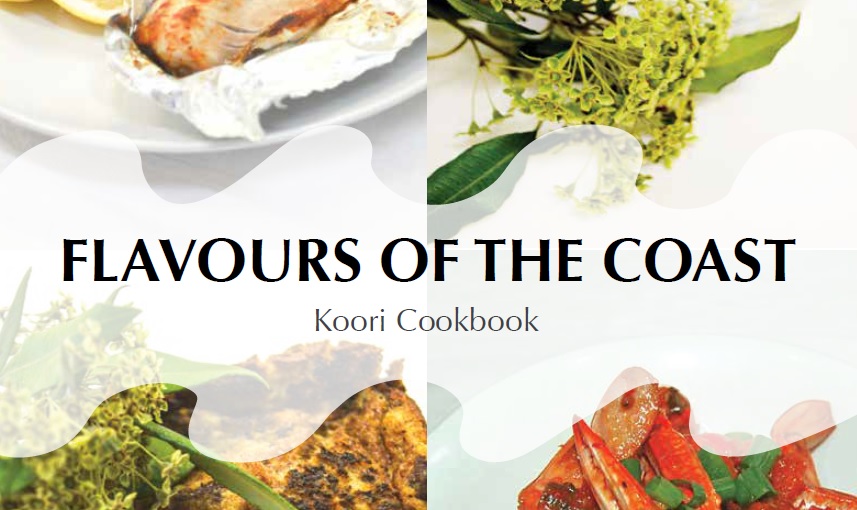
Businesses
Narana Cultural Centre
Narana is an award winning Aboriginal Cultural Centre. Cafe Narana serves up an extensive breakfast and lunch menu featuring dishes inspired by native ingredients and Indigenous flavours. They also have a retail outlet stocking cultural items including boomerangs, didgeridoos, clothing and fashion accessories, homewares, health and beauty products, bush herbs and spices and souvenirs.
Narana facebook: www.facebook.com/narana.com.au/
Koori Kulcha
Koori Kulcha is a catering and cultural business based in South East NSW. Their menus specialise in Indigenous dishes.
www.koorikulchaexperience.com.au
Mabu Mabu
Mabu Mabu is an Indigenous hospitality, catering, business and restauraunt located in Federation Square, Melbourne. Mabu Mabu is a saying in the Torres Strait that means ‘help yourself.’ It’s what you say before you dig into a big meal with friends and family. Our food culture is all about sharing, and this experience is fundamental to our business. Whether you are joining us for a meal, an event, or picking up some products at home, we want you to feel part of our village.
Further reading
Dark Emu
Dark Emu is an extremely important book that challenges the colonial idea that Aboriginal people were ‘hunter-gatherers.’ Bunurong, Punniler panner and Yuin author and historian Uncle Bruce Pascoe lays out the evidence of Aboriginal people across the country using sophisticated farming, food storage and land management techniques to care for Country and sustain healthy populations. He also explains that Aboriginal people were falsely labelled ‘hunter-gatherer’ and ‘primitive’ by colonisers to justify land theft and invasion.
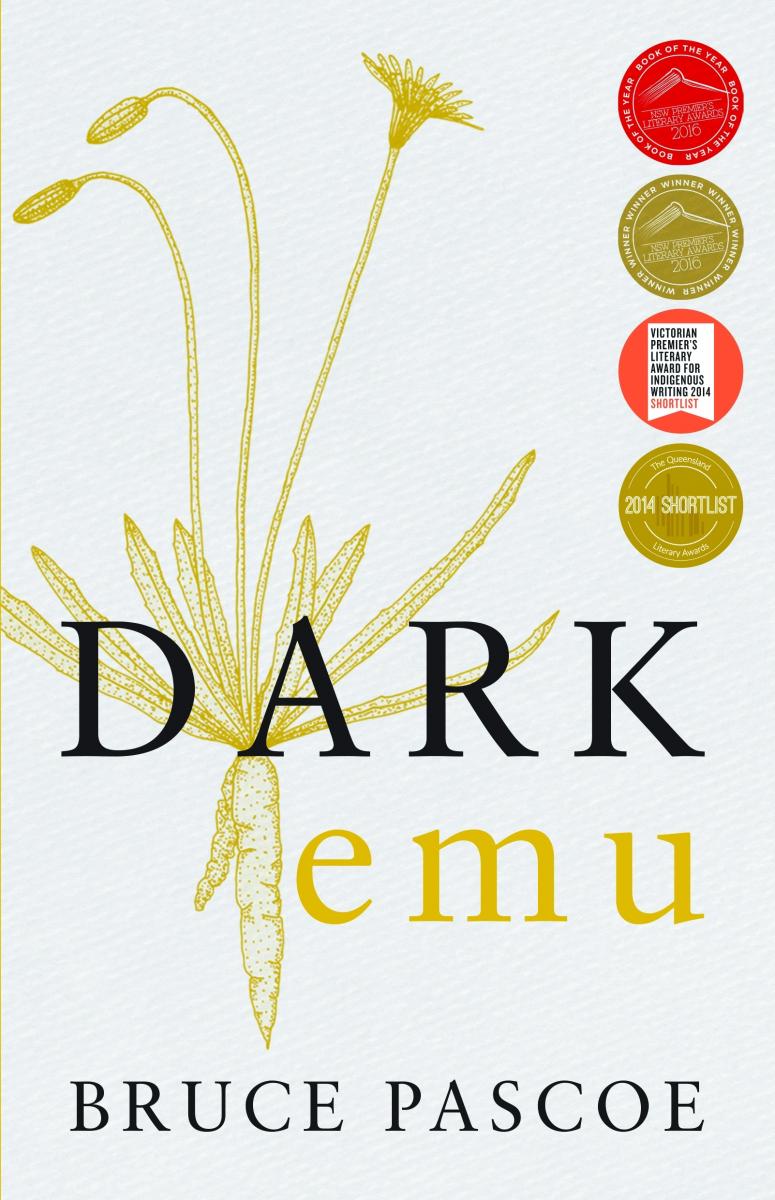
Also
Young Dark Emu (for young readers)
Sources
- Aboriginal Culture, Traditional Aboriginal Bush Foods
- ABC, Rethinking Indigenous Australia's agricultural past
- The Guardian, Indigenous owners hope ancient eel traps will be recognised as world heritage
- Australian Geographic, Top 10 Aboriginal bush medicines
-
Flavours of the Coast - Koori Cookbook
Recipes from the Aboriginal and Torres Strait Islander people of the Illawarra and Shoalhaven.Download


